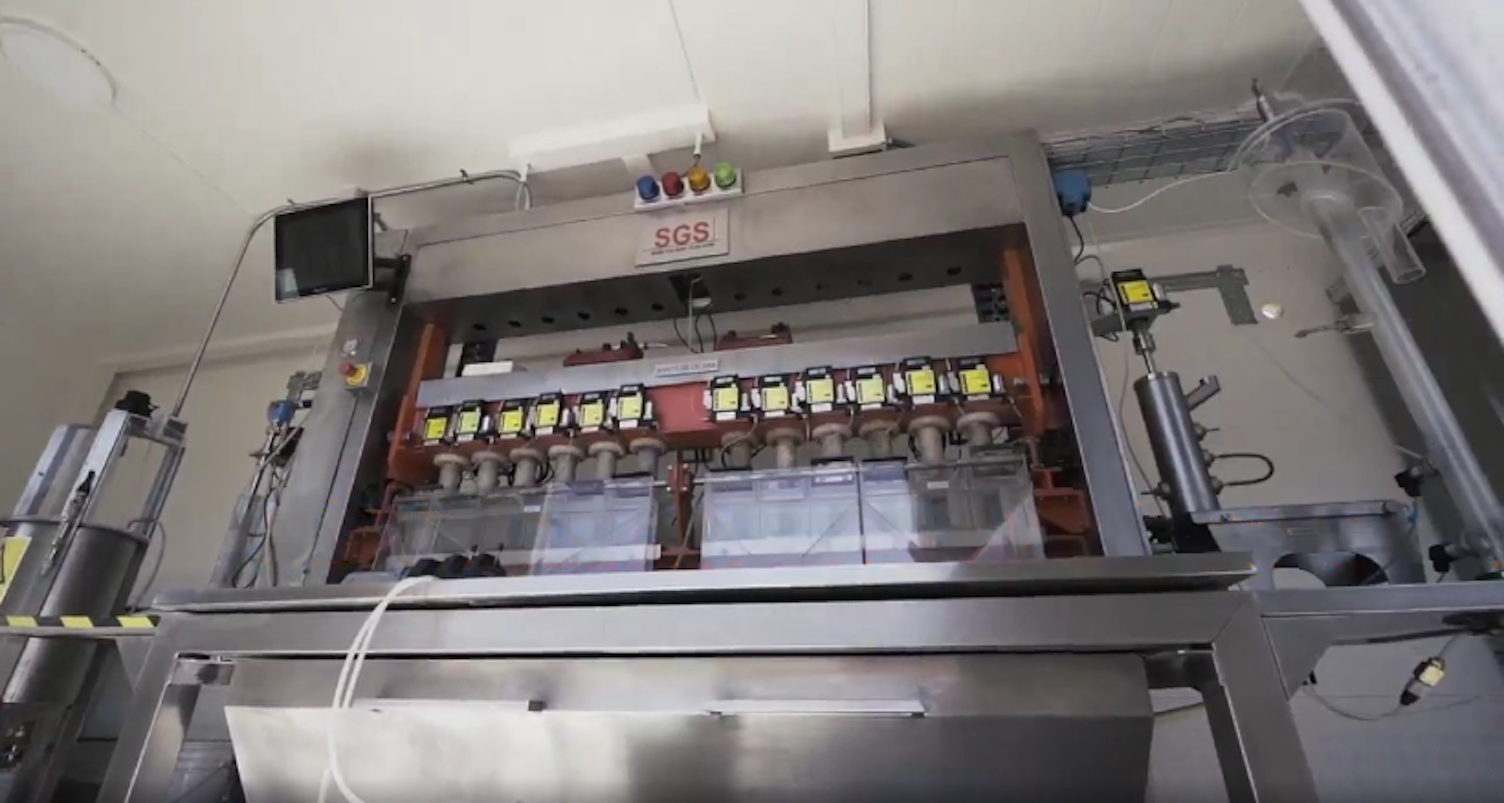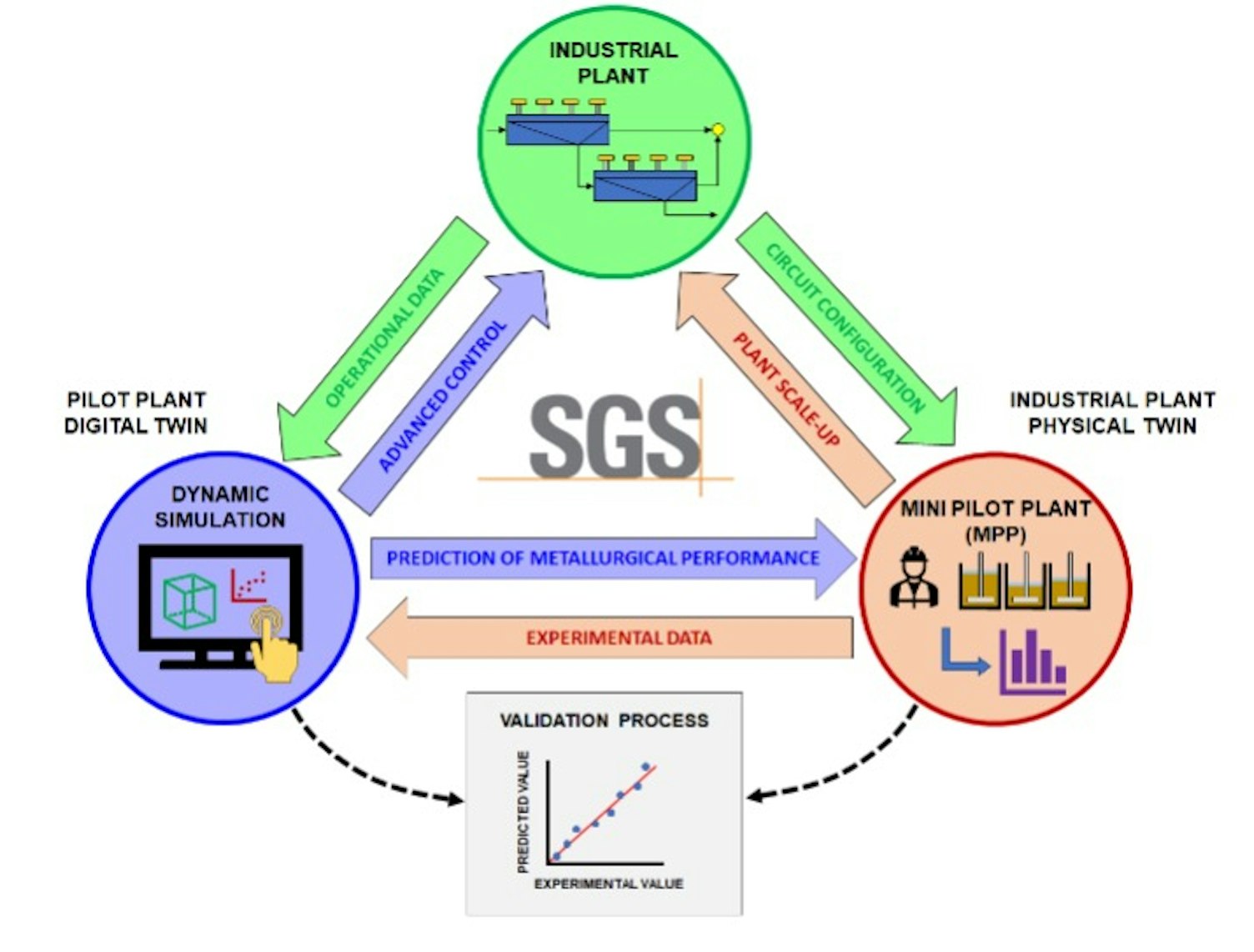By M. Vera and I. Manzo – SGS MINERALS – CONSULTING
The mining business is improving continuously in order to increase productivity, efficiency, and profitability. A well-integrated business allows these objectives to be accomplished by a holistic connection between technical understanding of the processes, ore variability, economic optimization, and efficient exploration of new scenarios.
At the same time, this integration must be developed from a sustainable viewpoint. However, the mining industry is facing a challenging environment which must be taking into account to implement a successful integration strategy.
Current challenges in the mining industry: Searching for an Advanced geometallurgy approach.
Nowadays, complex geological resources, decreasing ore grades and uncertainty in achieving acceptable metallurgical performance of ores make the characterization process labor intense and expensive. In that scenario, high-quality and reliable mineralogical information is needed to characterize the ore in terms of its metallurgical behavior at different operational conditions.
This integration must be linked to a technical and economical understanding of the process to achieve metallurgical performances that ensures a sustainable economic benefit, i.e., implementation of a geometallurgical strategy.
For this purpose, the digitalization of the information helps leverage process description, allows data in real-time to be managed efficiently and improves flowsheet monitoring and controlling. In this context, Digital Twin (DT) applications have been used to map out different processing scenarios that consider alternative operating conditions and varying ore characteristics to define ore boundary conditions.
The integration of geometallurgical data, feed ore characteristics, and plant online sensor data with a detailed dynamic mineral particle-based processing model of the plant is urgently required today. Furthermore, a phenomenological description of the industrial plant is a critical aspect to be considered. However, this could be challenging, expensive, and a long process.
To handle this challenge, the evaluation of a process performance in a contextual manner by means of a pilot plant is beneficial to reduce uncertainty on metallurgical results. In addition, leveraging pilot plant results by digitalize them helps describe the process dynamically. Consequently, the integration of these tools to leverage mineral processing optimization aims at the developing an advanced geometallurgical approach.
SGS Mobile Mini Pilot Plant and its Digital Twin: Geometallurgical exploration tool
SGS has designed, built, and commissioned a flotation mini pilot plant. This physical system was utilized to extract a digital twin (i.e., digital system) which allows different processing scenarios to be explored. Then, these scenarios are ranked based on their specific metallurgical performances.

The SGS Mobile Mini Pilot Plant (MPP) can be used to evaluate different processing scenarios considering grinding, classification, flotation and solid-liquid separation.
The flotation section of the MPP consist of 12 mechanical cells with air injection measured through mass flow meters, and level controls by means of a weir. The flexibility of the MPP allows a variety of circuit configurations to be explored in order to emulate different industrial conditions.
The MPP can also be operated through a centralized control interface with remote accessibility, where metallurgical performances are determined by capturing data and characterizing metallurgical samples with an XRF analyzer. Finally, the MPP is a mobile system that can be run with actual process streams, helping tremendously in the logistic aspects of testing.
The MPP hardware allows different parameters to be measured online to provide a dynamic mass balance description of the flotation configuration used in the development of the Digital Twin. The latter is a digital system based on robust phenomenological dynamic models.
In other words, the process can be described in steady-state conditions as well as dynamic conditions, i.e., MPP is flexible enough to accommodate different testing conditions.
The digital representation of the MPP considers number of cells and configuration, mineral species, froth and pulp zones, and product streams (i.e., tailings and concentrates). This information is used to define the aspect of the process inputs, and also to identify the relevant parameters that help establish model structure.
Finally, the main objective of this digital representation (i.e., modelling/simulation) is to estimate metallurgical performance as a function of defined parameters.
A well-instrumented physical process (MPP) generates process information that will constitute the database needed to tune the process model dynamically which helps explore new processing scenarios, and then validate them in the physical system. This two-way communication is like having a mirror image of the physical system that is represented digitally.
In order to validate new scenarios and improve process performance, the Digital Twin of the MPP would facilitate the identification of appropriate process conditions to be used, i.e., optimize the metallurgical performance based on the ore characteristics. Therefore, the integrated system MPP—Digital Twin can be used as a low risk and reduced cost geometallurgical exploration tool.
Advanced geometallurgical characterization
A holistic integration of the MPP, Digital Twin and industrial plant represents a powerful characterization tool. As previously described, the dynamic simulation is the basis for the Digital Twin development, which represents a “virtual image” of the MPP.

As a result, the Digital Twin allows an MPP metallurgical performance to be predicted under operational conditions that are measured online. The model prediction must be validated by contrasting non-modelled experimental data with predicted results.
At the same time, the SGS proposed approach relies on considering the MPP as a physical twin of the industrial plant (emulation of flotation circuit configuration). The connectivity between the industrial operation and the MPP is assured through a robust scale-up methodology, which allows the MPP conditions to be implemented to achieve the optimized metallurgical performance (validated by MPP digitalization) at industrial scale.
Finally, a potential two-way communication route between industrial plant and Digital Twin could be possible due to Digital Twin training, and the understanding of the scale-up methodology. Knowledge generation and transfer of it may help adjust and control equipment variables at industrial scale based on the learning embedded in the Digital Twin.
It is believed that the triangle established among the MPP, Digital Twin, and Industrial Plant represents an advanced approach to capture ore metallurgical performance variability. That is, in context with plant flowsheet configuration and assess in the Mini Pilot Plant at a low risk by means of the utilization of the Digital Twin. As such, this approach represents an advanced geometallurgical evaluation.
Concluding remarks
The Mini Plot Plant environment serves as a platform for testing different process design at low risk. In addition, static and dynamic modelling/simulation of the mini pilot plant have been developed and tuned. Simulation of different process scenarios can be useful in process design and improvement, process knowledge, identification of key measurement, soft sensors, and control design.
Last but not least, simulation using a Digital Twin allows model adaptation of unmodelled phenomena to be explored. This in turn enables real-time information integration to be used in the exploration of new scenarios.
To conclude, the integration of ore characteristic information, ore process response at pilot plant and industrial scale, and the Digital Twin provides a more sophisticated, but practical, approach to reduce operational risks (manage process uncertainty) and optimize ore processing.
References
- GTK (2021) Digital Twin of the GTK Mintec Pilot Plant – For Customers and for Us. https://www.gtk.fi.
- Hatton, D., Hatfield, D. (2013). A Geometallurgical Approach to Flotation Process Design Using Optimised Grade-Recovery Curves. Canadian Mineral Processors Proceedings 2013.
- Jooshaki, M., Nad, A., Michaux, S. (2021). A systematic review on the application of machine learning in exploiting mineralogical data in mining and mineral industry. Minerals 2021, 11, 816.
- Kortelainen, J. (2019). Utilization of digital twin in model-based control of flotation cells. University of Technology LUT.
- Quintanilla, P., Neethling, S.J., Navia D., Brito-Parada, P. (2021). A dynamic flotation model for predictive control incorporating froth physics. Part I: Model development. Miner. Eng.
- Ross, V. (2019). Key aspects of bench flotation as a geometallurgical characterization tool. The Southern African Institute of Mining and Metallurgy.
- SGS. (2021) Mini Planta Piloto Móvil brochure. SGS Natural Resources.
¿Are you looking for comprehensive solutions to take your company on the road to sustainability? ¡Contact us for more information!


